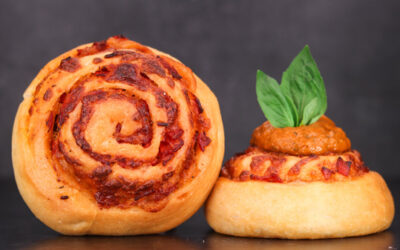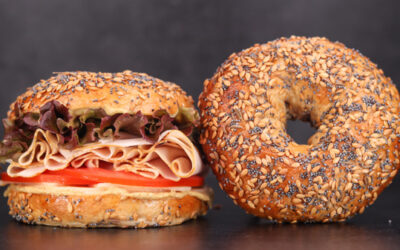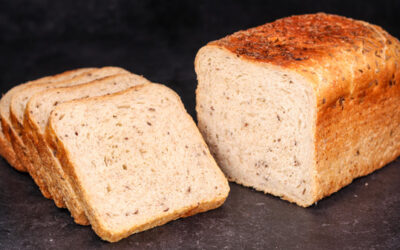I’ve made a video about a tiger bread loaf already and that bread was great with its light interior and crispy crust. It is an extremely simple recipe both in the ingredients and preparation. But as you may already know I’ve been simplifying my old recipes even further lately.
So, here is a no-knead cold proofed tiger bread roll which is prepared on the day before baking and left to proof in the fridge ready to be baked in the morning, and used to make super tasty breakfast sandwiches. It takes less hands-on time than the original recipe and it results in superior flavour thanks to long cold fermentation.
These rolls are pretty soft already, but if you know the scalding method then you already know that they could be even softer. I would say if you were going to eat the rolls soon after baking like I did for my breakfast, then don’t bother with scalding. But if you want to maximize the softness and make them stay softer for longer, then you can certainly scald 20% of the flour.
This recipe makes 4 large rolls.
Watch the video down below for detailed instructions.
Ingredients
For the dough –
300g (10.6oz) white bread flour
150g (oz) water*
3g (0.1oz) instant dry yeast or 3.6g (0.13oz) active dry yeast or 9g (0.31oz) fresh yeast
6g (0.21oz) salt
10g (0.35oz) sugar
1 medium egg (50g; 1.75oz)
30g (1oz) soft butter
*To learn more about no-knead dough temperature control click here.
For the topping –
30g (1oz) rice flour
30g (1oz) water
1g (0.035oz) salt
5g (0.17oz) sugar
1g (0.035oz) instant dry yeast or 1.2g (0.042oz) active dry yeast or 3g (0.1oz) fresh yeast
10g (0.35oz) oil (I used olive oil. Toasted sesame oil is commonly used for this too)
The flour I use has a protein content of 13%. If your flour is weaker, then you may need to lower the hydration.
If you are using active dry yeast, then you may need to let it sit in the water for 10 minutes before adding the other ingredients or else it could take a lot longer to raise the dough.
If you are curious about why the dough contains butter, egg, and sugar, click the links to learn more about the effects those ingredients have on bread dough.
Method
- In a large bowl combine the water, yeast, salt, sugar, egg, and butter. Mix well to dissolve the salt and sugar. Add the flour and mix to a dough. *Desired dough temperature around 25C (77F). If your dough is warmer, then it will ferment more rapidly. If it is cooler, then it will take longer. Adjust the fermentation time, if necessary, like I did.
- Ferment for 25-30 minutes.
- Fold.
- Ferment for 25-30 minutes.
- Make the topping. Combine the salt, sugar, yeast, oil, and water. Mix to dissolve the salt and sugar. Add the rice flour and mix until smooth. Leave on the side.
- Divide the dough into 4 equal pieces and pre-shape. You can make smaller rolls by dividing the dough into 5 or even 6.
- Leave the dough balls to rest for 15 minutes.
- Final shape and place on a non-stick paper lined baking tray with plenty of space in between the dough balls.
- Brush with the topping. It should be a nice and thick layer. I had less topping paste in the video because I made a mistake when converting my loaf recipe to rolls as I did not consider the larger surface area. I have adjusted the amounts of ingredients, so that you have more paste to use.
- Cover and cold proof for 12 – 24 hours.
- On the next day pre-heat the oven to 180C (355F) fan on or 200C (390F) fan off.
- Let the dough balls warm up at room temperature for 30 minutes before baking.
- Bake for 20 minutes or until nicely golden brown all over.
Leave to cool down slightly and tuck in!
Keep in mind that the conditions in each kitchen are different, so fermentation times may vary for you. It is up to the baker to control the bread and react accordingly.
Your oven may be different too, so your baking time may vary.
Watch The Video Here



